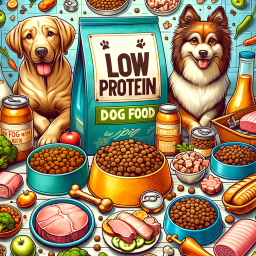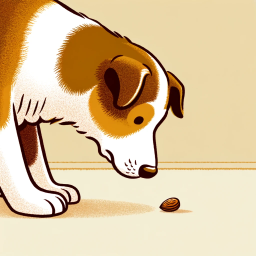Are Turkey Necks Good for Dogs? A Comprehensive Nutritional Guide

When it comes to treating our canine companions, the options are both varied and vast. Among the plethora of choices, one treat that often sparks curiosity and debate among dog owners is the turkey neck. Rich in nutrients and offering a chewy challenge, turkey necks stand out as a potential addition to a dog’s diet that could bring about several health benefits. But, as with any treat, they come with their set of questions and concerns. Are turkey necks good for dogs? Can they contribute positively to a dog’s nutritional needs? And what are the best practices for incorporating them into your pet’s diet?
This article delves deep into the world of feeding turkey necks to dogs, aiming to unravel the myths, highlight the benefits, and outline the risks. We will explore the nutritional profile of turkey necks, examining how these treats can support your dog’s health—from dental hygiene to joint support. Moreover, we will address the potential risks and safety considerations every dog owner should be aware of, offering guidance on how to properly prepare and serve turkey necks. Through expert opinions, veterinary advice, and real-life testimonials, this comprehensive guide seeks to provide dog owners with the information needed to make informed decisions about including turkey necks in their pets’ diets.
Whether you’re a seasoned dog owner exploring new dietary options for your pet or someone curious about the benefits and risks associated with turkey necks, this article aims to equip you with the knowledge and insights to ensure the well-being and happiness of your furry friend. So, let’s embark on this journey to discover if turkey necks could be the next favorite treat for your dog.
Nutritional Profile of Turkey Necks
Turkey necks, often overlooked in human cuisine, emerge as a nutritional powerhouse for our canine companions. Their composition offers a unique blend of benefits, perfectly aligning with the dietary needs of dogs. Understanding the nutritional profile of turkey necks reveals why they are increasingly considered a valuable addition to a dog’s diet.
Rich in Protein: Turkey necks are predominantly composed of muscle meat, making them an excellent source of high-quality protein. Protein is essential for dogs, supporting everything from muscle development and repair to the maintenance of healthy skin and fur. The lean nature of turkey protein also makes it a suitable option for weight management.
Natural Source of Calcium and Phosphorus: Unlike processed treats, turkey necks provide natural bones, which are rich in calcium and phosphorus. These minerals are crucial for maintaining strong bones and teeth in dogs. The balance of calcium and phosphorus in turkey necks helps ensure optimal absorption and utilization, supporting skeletal health.
Glucosamine and Chondroitin for Joint Health: Turkey necks are a natural source of glucosamine and chondroitin, compounds renowned for their effectiveness in maintaining joint health. These nutrients contribute to the formation and repair of cartilage, offering relief and prevention from joint issues such as arthritis, especially in aging dogs.
Essential Fatty Acids: The meat on turkey necks contains beneficial fatty acids, including omega-3 and omega-6. These are vital for a healthy immune system, reducing inflammation, and promoting a shiny, healthy coat. While not as high as in some fish-based treats, the fatty acids in turkey necks still contribute to a well-rounded diet.
Trace Minerals and Vitamins: Turkey necks also provide a spectrum of trace minerals and vitamins that are essential for a dog’s overall health. This includes zinc for immune function, iron for blood health, and B vitamins for energy metabolism. These components make turkey necks not just a treat but a beneficial supplement to a dog’s diet.
Comparative Analysis: When compared to other dog treats, turkey necks stand out for their natural composition and lack of additives. Many commercial treats contain artificial ingredients and fillers, whereas turkey necks offer pure nutritional value. Their natural makeup means they’re closer to what dogs would eat in the wild, aligning with their carnivorous dietary needs.
Read Also: Why Does My Dog Sleep on My Head? Top 20 reasons
Health Benefits of Turkey Necks for Dogs
Feeding turkey necks to dogs offers a variety of health benefits, stemming from their rich nutritional profile. These benefits encompass not only physical health improvements but also contribute to the psychological well-being of dogs. Here’s how turkey necks can be a beneficial addition to a canine diet:
1. Dental Health: One of the most immediate benefits of turkey necks is their role in promoting oral hygiene. The act of gnawing and chewing on the raw bones scrapes off plaque and tartar from the dog’s teeth, significantly reducing the risk of periodontal diseases. The mechanical action of chewing also massages the gums, which can help to strengthen them and reduce the risk of gum diseases.
2. Joint Support: Turkey necks are a natural source of glucosamine and chondroitin, two key components that support joint health. These substances help to rebuild and maintain cartilage, leading to improved joint mobility and a reduction in the risk of developing conditions like osteoarthritis, which is particularly beneficial for senior dogs or breeds prone to joint issues.
3. Nutritional Benefits: The balanced levels of calcium and phosphorus in turkey necks support the development and maintenance of strong bones and teeth. Additionally, the high protein content aids in muscle development and repair, while the essential fatty acids contribute to a shiny coat and healthy skin. The presence of trace minerals like zinc and iron further supports overall health by boosting the immune system and improving blood health.
4. Mental Stimulation: Chewing on turkey necks can provide dogs with much-needed mental stimulation. The act of chewing is a natural behavior for dogs and can help to relieve boredom and anxiety, promoting a sense of well-being. It also satisfies their instinctual urge to chew, potentially deterring them from chewing on inappropriate items around the house.
5. Digestive Health: For dogs fed a raw diet, the inclusion of raw turkey necks can aid in digestive health. The rough texture of the bones helps to naturally scrub the intestinal walls, promoting healthy bowel movements. Additionally, the act of breaking down the bones can stimulate the production of stomach acids, which can aid in the digestion of other foods.
6. Weight Management: Turkey necks are lean and provide high-quality protein without an excess of calories, making them an excellent treat option for dogs on a weight management plan. They offer a satisfying chew experience without the risk of contributing to obesity when fed in appropriate quantities.
Safety and Moderation: While turkey necks offer numerous health benefits, it’s important to feed them to your dog safely. Raw turkey necks should be sourced from reputable suppliers to minimize the risk of bacterial contamination. It’s also crucial to supervise your dog while they’re enjoying turkey necks to prevent choking, especially for dogs that might attempt to swallow large pieces whole. As with any dietary change or addition, consult with your veterinarian to ensure turkey necks are a suitable treat for your dog, considering their specific health needs and dietary requirements.

Potential Risks and Safety Considerations
While turkey necks for dogs offer numerous health benefits, there are also potential risks and safety considerations that pet owners should be aware of. Ensuring the well-being of your canine companion involves understanding these risks and taking steps to mitigate them.
Choking Hazard: One of the primary concerns with feeding turkey necks to dogs is the risk of choking. This is particularly true for smaller dogs or dogs that tend to gulp their food rather than chew it thoroughly. It’s important to select a turkey neck that is appropriate for your dog’s size and to supervise them while they eat to ensure they are chewing the neck properly and not attempting to swallow large pieces whole.
Risk of Bone Splinters: Although less brittle than cooked bones, raw turkey neck bones can still pose a risk if they splinter. This can cause internal injuries, such as perforations in the digestive tract, which could require emergency veterinary care. To minimize this risk, always feed raw turkey necks under supervision and avoid cooking them, as cooking increases the likelihood of bones splintering.
Bacterial Contamination: Raw turkey necks, like any raw meat product, can harbor bacteria such as Salmonella and E. coli. These bacteria pose a risk not only to your dog but also to human members of the household through cross-contamination. Safe handling practices, including washing hands and surfaces thoroughly after handling raw turkey necks, are essential. Additionally, sourcing turkey necks for dogs from reputable suppliers who follow high standards of hygiene can help reduce this risk.
Dietary Imbalance: Relying too heavily on turkey necks for dogs as a significant part of their diet could lead to nutritional imbalances. While turkey necks are nutritious, they do not provide a complete and balanced diet on their own. They should be fed as part of a varied diet or as a treat, not as a sole food source.
Individual Dog Sensitivities: Each dog is unique, and what works for one may not work for another. Some dogs may have sensitivities or allergies to poultry, including turkey. Introducing turkey necks slowly into your dog’s diet and monitoring for any signs of digestive upset or allergic reactions is crucial.
Feeding Guidelines: To safely include turkey necks in your dog’s diet, consider the following guidelines:
- Start with a small piece to ensure your dog tolerates it well.
- Always supervise your dog when they are eating a turkey neck to react quickly in case of choking.
- Feed turkey necks as a treat or part of a meal rather than the entire meal to maintain dietary balance.
- Keep raw turkey necks frozen until ready to use, and thaw them safely in the refrigerator.
while turkey necks for dogs can be a healthy and enjoyable treat offering multiple benefits, it’s important to approach their inclusion in your dog’s diet with caution.
How to Properly Prepare and Serve Turkey Necks
When considering the inclusion of turkey necks in your dog’s diet, knowing how to properly prepare and serve them is crucial for their safety and enjoyment. The question, “Are turkey necks good for dogs?” often leads pet owners to explore raw feeding options, with raw turkey necks for dogs being a popular choice due to their nutritional benefits and ability to promote dental health. Here’s a guide on how to safely incorporate turkey necks into your canine companion’s diet.
Choosing the Right Turkey Necks: Select high-quality, fresh turkey necks from reputable sources. Organic or free-range turkey necks are preferable as they are less likely to contain antibiotics or hormones. Ensure the turkey necks are appropriately sized for your dog; larger breeds can handle whole turkey necks, while smaller breeds may require the necks to be cut into smaller pieces.
Preparing Turkey Necks: Raw turkey necks can be fed as they are, without the need for cooking, which preserves their nutritional integrity and prevents the bones from becoming brittle and potentially hazardous. If you’re introducing turkey necks for the first time, you might want to rinse them under cold water before serving.
Serving Turkey Necks:
- For larger dogs: A whole turkey neck can be a satisfying and stimulating treat. Ensure your dog has a comfortable and clean space to enjoy their treat where they won’t feel the need to guard it from other pets.
- For smaller dogs or as a precaution: Cutting the turkey neck into smaller, more manageable pieces can help minimize the risk of choking. This can be particularly helpful when you’re first introducing turkey necks to your dog’s diet.
Feeding Guidelines:
- Frequency: As part of a balanced diet, raw turkey necks can be offered to dogs a few times a week, depending on your dog’s size, dietary needs, and overall health.
- Quantity: Turkey necks should only make up a small portion of your dog’s overall dietary intake. A general guideline is that treats, including turkey necks, should not exceed 10% of your dog’s total daily calories.
Hygiene and Storage:
- Hygiene: Practice good hygiene by washing your hands before and after handling raw turkey necks. Clean any surfaces or utensils that come into contact with the raw meat to prevent cross-contamination.
- Storage: Keep raw turkey necks frozen until you’re ready to use them, and thaw them safely in the refrigerator. Any uneaten portions should be discarded rather than saved for later to prevent spoilage and bacterial growth.
Monitoring Your Dog: Always supervise your dog when they’re eating turkey necks, especially during the initial introductions. Watching how they chew and digest can help you determine whether turkey necks are a suitable treat for them and can alert you to any issues that may arise, such as choking or gastrointestinal discomfort. raw turkey necks for dogs can be a beneficial addition to their diet when prepared and served correctly.

Alternative Treats and Nutritional Comparisons
Here’s an analysis of alternative treats and their nutritional comparisons to turkey necks for dog:
| Treat | Protein (%) | Fat (%) | Fiber (%) | Key Benefits | Risks |
|---|---|---|---|---|---|
| Turkey Necks | High | Low | Low | Dental health, joint support, mental stimulation | Choking hazard, potential for bone splinters, risk of bacterial contamination |
| Bully Sticks | High | Low to Moderate | Low | Dental health, long-lasting chew | Risk of blockages if swallowed in large pieces, high in calories |
| Sweet Potato Chews | Moderate | Low | High | Digestive health, low calorie | May cause digestive upset in large quantities |
| Dental Chews | Varies | Low to Moderate | Moderate | Dental health, variety of flavors and textures | Can contain artificial ingredients, risk of dental damage from hard chews |
| Rawhide | High | Moderate to High | Low | Long-lasting chew, dental health | Risk of blockages, choking hazard, treated with chemicals |
| Green Lipped Mussel | High | Low | Low | Joint support, high in omega-3 fatty acids | Allergic reactions, expensive |
This table provides a quick reference to compare the nutritional content and benefits versus the risks associated with each type of treat, including turkey necks.
conclusion
addressing the question “Are Turkey Necks Good for Dogs?” requires a multifaceted approach. While turkey necks offer substantial nutritional benefits, including joint support, dental health, and mental stimulation, they are not without their risks. Proper preparation and mindful inclusion of raw turkey necks for dogs in their diet can mitigate potential hazards such as choking, bacterial contamination, and nutritional imbalance.
When considering alternative treats, it’s evident that each option presents its own set of advantages and drawbacks. From high-protein bully sticks to low-calorie sweet potato chews, the choice of treat should align with the dog’s specific dietary needs, health status, and preferences. The comparison table highlights the diversity in nutritional content and potential risks associated with each treat, underscoring the importance of a balanced approach to canine nutrition.
Read Also: are chicken feet good for dogs? A Comprehensive Guide for Pet Owners
Read Also: Herbs and Spices that are Good for Dogs
faq
Are turkey necks safe for dogs?
Turkey necks can be safe for dogs if fed raw and in appropriate sizes to prevent choking and ensure they are from a reputable source to avoid bacterial contamination.
Are turkey necks healthy?
Yes, turkey necks are healthy for dogs, offering high-quality protein, glucosamine, chondroitin, and essential fatty acids, supporting joint health, dental hygiene, and overall well-being.
Are raw turkey bones safe for dogs?
Raw turkey bones are generally safe for dogs as they are softer and less prone to splintering compared to cooked bones, but they should be fed under supervision.
Are turkey necks better than chicken necks for dogs?
Turkey necks may provide more substantial chewing and nutritional benefits compared to chicken necks due to their size and composition, making them suitable for larger dogs.
Are cooked turkey necks good for dogs?
Cooked turkey necks are not recommended for dogs as the cooking process can make the bones brittle and prone to splintering, posing a risk of internal injury.
Are turkey necks digestible?
Yes, turkey necks are digestible for dogs, especially when fed raw. They help promote healthy digestion by providing roughage and stimulating stomach acid production.





